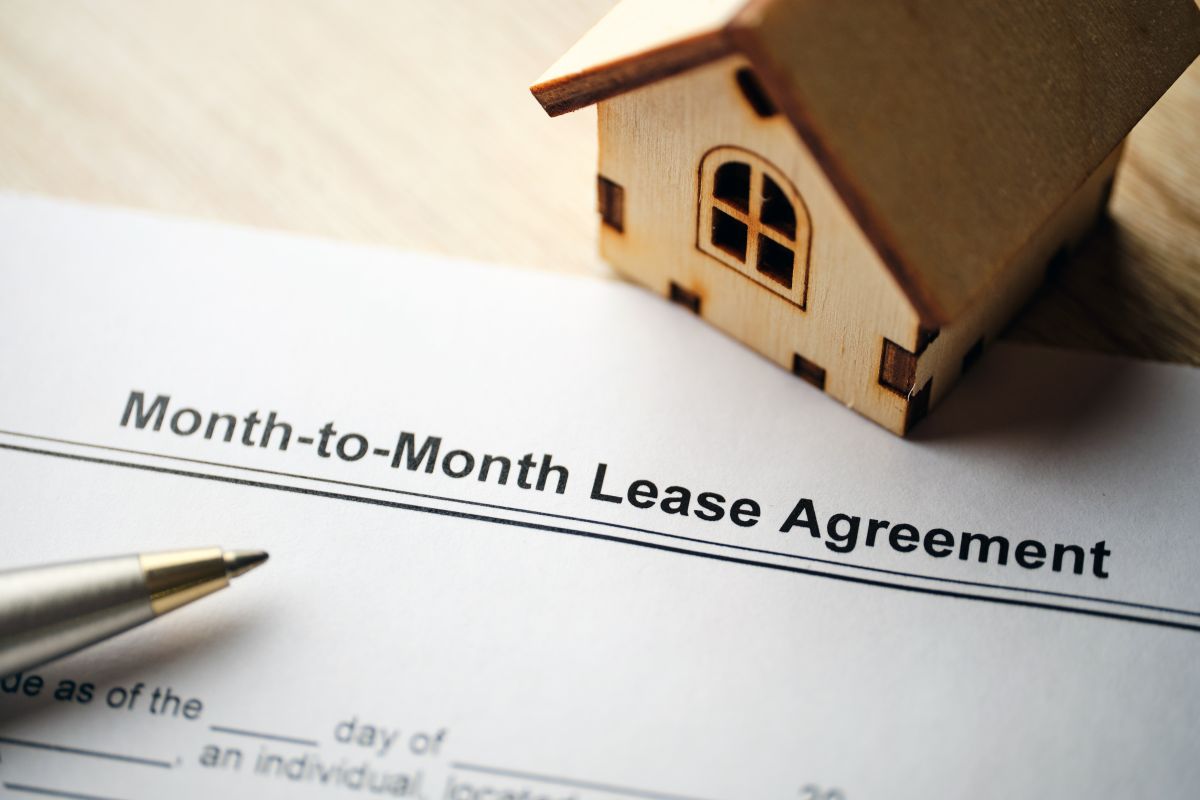As a landlord, keeping your property filled and your cash flow consistent matters, but so does having room to adjust when things change. Month-to-month leases can give you flexibility, but they also come with tradeoffs.
Before you decide, consider how this option fits your goals, your rental market, and the kind of tenants you’re looking for.
What Is a Month-to-Month Lease?
A month-to-month lease is a rental agreement that renews automatically every 30 days until the landlord or tenant gives the proper notice to end it. It offers more flexibility than a fixed-term lease and can be a smart short-term solution in the right situation.
How It Differs from a Fixed-Term Lease
A fixed-term lease locks both the landlord and tenant into a rental agreement for a set period, typically six months or a year. During that time, the terms (including rent) are generally fixed, and breaking the lease early often involves penalties.
A month-to-month lease gives you and your tenant the option to end the agreement with appropriate notice. That kind of flexibility can be useful, especially in uncertain markets or transitional situations, but it also means less stability and more turnover.
When It Typically Comes Into Play
Month-to-month leases are often used:
After a fixed-term lease expires, the agreement continues without a formal renewal
When a landlord is in a transitional period (selling the property, changing management)
Between tenants during slower rental seasons
For tenants who need short-term housing or may relocate soon
Understanding why and when month-to-month leases are used can help you decide if they're right for your property.
Pros of Month-to-Month Agreements
There’s a reason many landlords and tenants prefer this setup.
Flexibility for Landlords and Tenants
The biggest advantage of a month-to-month lease is freedom. If a tenant turns out to be difficult, or if you're preparing to sell the property, you’re not tied to a year-long contract. Likewise, tenants appreciate the ability to move without long-term commitment.
That flexibility can make your rental more attractive to certain types of renters, like professionals on temporary contracts or people relocating to the area.
Easier to Adjust Rent or End Lease
Unlike a fixed-term lease, a month-to-month agreement allows landlords to make changes, like increasing rent or updating policies, with proper notice (typically 30 days, depending on local laws).
If your costs go up or the market shifts, this can help you stay aligned with current rental rates. It also gives you more control over who’s living in your property and for how long.
Cons to Consider
Month-to-month leases aren’t always ideal. There are some real downsides to consider, especially when it comes to long-term planning.
Unpredictable Vacancies
The biggest risk? Turnover. Tenants can leave at any time with just a month’s notice. That unpredictability can make it hard to plan ahead, budget, or ensure consistent rental income.
In a competitive rental market, this might not be a big issue. During slow seasons, however, you could face longer vacancy periods and increased marketing costs.
Harder to Plan Long-Term
If you’re trying to build a stable rental portfolio, month-to-month leases can make it harder to forecast income and schedule property maintenance or renovations. It’s also harder to plan for the future if tenants may move out at any time.
While the short-term nature of these leases offers flexibility, it may come at the cost of stability.
When It Makes Sense to Offer One
So when should you consider offering a month-to-month lease? While they may not be your default strategy, they can be a smart tool in certain situations.
Between Tenants or During Off-Season
If your property becomes vacant during a slower time of year, like winter, a short-term lease might help you keep it occupied until the market picks up again.
A month-to-month agreement can bridge the gap until peak rental season, when you're more likely to find a long-term tenant. This gives you flexibility without locking into a full lease at a less-than-ideal time.
For Long-Term Tenants with Good History
Some long-term tenants prefer to go month-to-month after their initial lease expires. If you have a tenant who’s been reliable and communicative, allowing them to switch to a month-to-month lease can build goodwill and loyalty, while giving both sides flexibility.
In these cases, it can be a win-win, as long as you’re clear on expectations and notice requirements.
Setting Clear Terms
If you offer a month-to-month lease, it’s essential to set clear, written terms. This helps avoid confusion and ensures both landlord and tenant are on the same page.
Notice Requirements
Be sure to spell out how much notice each party must give to end the lease. In most cases, 30 days is standard, but laws can vary by state and city. Some local ordinances may require 60 days or more, especially if the tenant has lived in the unit for a long time.
Make sure your lease agreement reflects local regulations and protects your interests.
Rental Rate and Policy Updates
Month-to-month leases allow for more frequent updates to rent, pet policies, and other terms, but those changes still require proper written notice. Keep a system in place for communicating updates professionally and clearly. Changes to the lease must comply with local rent control and fair housing laws.
At RHOME, we help property owners make smart, informed decisions based on real-world rental dynamics. Need help setting up lease terms that fit your goals? Our experienced team is here to guide you. Contact RHOME today to learn more.


.png)